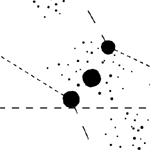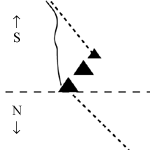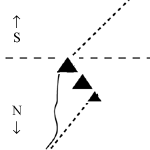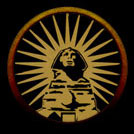BBC Horizon: Atlantis Uncovered and Altantis Reborn, 28 October & 4 November 1999
Formal Letter of Complaint from Graham Hancock to the BBC
Open letter to Bettina Lerner, Series Editor, Horizon ([email protected])
CC: [email protected], [email protected], [email protected], [email protected], [email protected]
Postal copy to: FRASER STEEL, HEAD OF PROGRAMME COMPLAINTS, PCU, BBC BROADCASTING HOUSE, LONDON W1A 1AA
From Graham Hancock,
Friday 5 November 1999
Dear Bettina Lerner,
Re: BBC2 Horizon, Atlantis Reborn, 4 Nov 99, 9.30 pm
This is a formal complaint to the BBC. Although I have directed it to you, since you have responsibility for the Horizon series, I have also copied it to the Programme Complaints Unit and requested them to investigate.
My initial reaction to Episode 2 of the BBC’s attempt to debunk the lost civilisation hypothesis in general, and me in particular, is one of surprise, dismay and shock. Friends in the media had warned me from the beginning to expect a ‘stitch up’ and many advised me not to participate. But I have to say I trusted Chris Hale (the producer) and Julian Hudson (his research assistant) when they promised me that they were going to make a balanced programme. Indeed in my encounters with these gentlemen my position was exactly that of Ken Ledger, a visitor to my web site, who told me in an e-mail after the episode had been aired: "The BBC may have its fingers in many pies, be they political or ideological, but one thing is for sure; when it comes to matters such as these it rarely says anything aloud unless it has done its research both thoroughly and accurately." I felt reasonably certain that the BBC’s renowned thoroughness and accuracy would protect me from the ‘stitch-up’ that everyone was warning me about and so I decided to cooperate with Chris and Julian and give them the extensive interviews that they needed in order to make their show.
Now here is the problem with TV interviews. The interviewee may say many things but what actually ends up getting used in the programme is decided by the production team in the cutting room. That is their job, of course, but where complex arguments are concerned it is a heavy responsibility.
I do not think that the Horizon team lived up to this responsibility.
To pick one example out of many I appear, near the end of the episode, to make a blank statement – it comes across almost as an admission of guilt – to the effect that in my book Heaven’s Mirror I did not write at all about the subject of carbon-dating at Tiahuanaco. The way my statement is set up it is as though I have been caught out in a deception. It appears as though the intrepid interviewer has just asked me the jaw-dropping question ‘did you cover the implications of carbon-dating at Tiahuanaco’ and I have been obliged to confess ‘well actually no, I didn’t.’
The viewer would be forgiven for thinking me at least sloppy and at worst a bit of a fraud – and I must say that it seems to have been the intention of the producers from the outset to make me out to be that. What is mendacious is that in order to achieve that objective they simply omitted any statements that I made which, by inclusion, might have worked against the overall negative light that the programme sought to cast me in.
Thus in our interviews I told the Horizon team extremely clearly WHY I do not regard radio-carbon as a definitive dating tool for meglithic sites and why I have not spent a great deal of time writing about its implications. This is because it cannot date the stones themselves but only organic materials found in association with those stones. I repeat: YOU CAN ONLY DATE ORGANIC MATERIALS —- BONE, CHARCOAL, WOOD, ETC – WITH RADIOCARBON TECHNOLOGY; YOU CANNOT DATE ROCK-HEWN STRUCTURES SUCH AS THE GREAT SPHINX OF GIZA OR THE GIGANTIC MEGALITHS OF THE PUMA PUNKU IN TIAHUANACO.
I am absolutely flabbergasted that across the entire span of its two episodes Horizon consistently treated carbon-dating as the final arbiter in establishing the antiquity of megalithic sites – i.e. of sites made of big stones. Never once did the programme-makers let on to their viewers that radio-carbon cannot date stone. For a production that repeatedly took a high moral tone about me and Robert Bauval being selective with our facts I think this is an extraordinary example of… being selective with the facts. But to go further than that and use one segment of my interview where I state I don’t write about carbon-dating in Heaven’s Mirror but then to fail to use the other – where I explain why – is little short of dishonesty and misrepresentation.
Nor is it as if there is any doubt about my position on the limitations of radio-carbon dating of megalithic sites — so I can only conclude that the Horizon team must have wanted deliberately to misrepresent it. Not only from our interviews but from the body of my printed work Chris Hale and Julian Hudson know perfectly well that I’ve concentrated on trying to bring forward an alternative approach to measuring the antiquity of megalithic sites precisely because I am not satisfied that radio-carbon dates from associated organic debris tell us the whole story. As far back as 1995 I explained in Fingerprints of the Gods that archaeologists found it difficult: "to provide accurate dates for engineering works like roads and dry stone walls which contained no organic compounds. Radiocarbon was redundant in such circumstances; thermoluminescence, too, was useless. And while promising new tests such as Chlorine-36 rock-exposure dating were now being developed their implementation was still some way off. Pending further advances in the latter field, therefore, ‘expert’ chronology was still largely the result of guesswork and subjective assumptions."
Another piece of gratuitous misrepresentation occurs when the scholar Eleanor Mannikka is brought on to quibble away the apparent similarity that I have drawn attention to between the pattern of the principal stars in the constellation of Draco and the pattern of the principal temples at Angkor in Cambodia. The resemblance isn’t very good, she complains, and must be a coincidence. She then goes on to argue that Draco, the ‘dragon’ constellation, was unknown in Cambodia, that there was no dragon constellation, and that – apparently the killer blow to my theory – there is no dragon symbolism whatsoever at Angkor.
I was not given the opportunity to respond to these points in the questions Chris Hale put to me; however once again I am on record in my written work. In Heaven’s Mirror I make it abundantly clear that the Greek name ‘Draco’ means ‘dragon’ but that this constellation: "has also been understood, throughout history and in almost all cultures, to be some form of cosmic snake." I make an extensive case that rearing Naga serpents, which are by far the most prevalent sculptural motif at all the temples of Angkor, are very likely to be figures of Draco – the great celestial Naga. I leave no room for doubt about my view that Draco was perceived as a serpent at Angkor and I even remark that "the constellation of Draco does look very much like a rearing cobra with its hood extended." It seems to me, therefore – since Horizon were well aware of my arguments on this point – that it was unethical of them to allow Eleanor Mannikka to pour scorn on the suggestion of a Draco-Angkor correlation because "there are no dragons at Angkor" while failing to inform viewers that I do not at any point claim that Draco was seen as a dragon at Angkor!
But by far the worst example of misrepresentation occurred around Horizon’s tendentious and misleading treatment of the Orion correlation – Robert Bauval’s discovery that the pattern of the three belt stars of the constellation of Orion appears to be mimicked on the ground by the pattern of the three great pyramids at Giza. Here the programme’s chief ‘witness for the prosecution’, given a great deal of time to make his case, was the Los Angeles astronomer Ed Krupp — who argues that the pyramids are ‘upside down’ in relation to the stars in the sky. Both Robert Bauval and I in our separate interviews with Horizon provided detailed refutations of Krupp’s position on this matter but Horizon opted not to include even a single sentence from these refutations when they broadcast the show. Accordingly the viewer is left only with Krupp’s argument, bolstered of course by his weighty authority as a leading astronomer, without being given the right to hear our counter argument. Worse still the viewer is not even informed that we in fact do have a counter-argument! The way the programme slants the whole thing builds up a very strong – but entirely false – impression that we accept, or at any rate do not dispute, Krupp’s upside-down theory. The implication is that, yes, the pyramids are ‘upside down’ in relation to the stars but that we regard this merely as ‘nit-picking’ and not as a fatal argument against the Orion correlation theory. Using snippets from my interview I am allowed to state that a grand symbolic gesture was what was intended here by the ancient Egyptians and the impression is created that I simply brush aside the worrying fact that the this grand symbol is ‘upside down’. No wonder, therefore, that the Guardian newspaper’s preview of the programme (4 November 1999) states that "Horizon effectively demolishes most of Hancock’s popular assertions that ancient monuments like the Giza pyramids mirror constellations. This leaves Hancock groping irritably for justifications to excuse glaring inaccuracies in his work. The whole exercise is, in the end, rather embarrasing as he fails to address flaws in his argument pinpointed by astronomers."
But in my interviews with Horizon I did address the supposed ‘flaws’ pinpointed by Ed Krupp (actually the only astronomer on the show). The problem is that the producers, in their wisdom, decided not to broadcast what I had said. Does this not go against the BBC’s own guidelines to producers where it states that: "Due impartiality lies at the heart of the BBC. It is a core value and no area of programming is exempt from it… A factual programme dealing with controversial public policy or matters of political or industrial controversy will meet its commitment to due impartiality if it is fair, accurate and maintains a proper respect for truth. A programme may choose to explore any subject, at any point on the spectrum of debate, as long as there are good editorial reasons for doing so. It may choose to test or report one side of a particular argument. However, it must do so with fairness and integrity. It should ensure that opposing views are not misrepresented."
Horizon was undoubtedly testing and reporting one side of a particular argument – it was testing my side of the argument about a lost civilisation and it was reporting the other side, i.e. the orthodox academic view as represented by Krupp. What it failed to do was to "ensure that opposing views are not misrepresented."
In brief the point I made to Horizon in the interview, and that Horizon chose not to broadcast, is that Krupp’s upside-down theory does not accord with common sense.
(1) If you stand at Giza looking south while the constellation of Orion is on the meridian its three belt stars look like this:

This is a fact, verifiable by observation. It is not an opinion.
(2) If you regard the ground at your feet as your canvas and wish to ‘draw’ there a recognisable image of what you see in the sky (or build a three-dimensional model of the image that you see in the sky) then there is only one way you can do it:

(3) Bauval and I believe that this is exactly what the pyramid-builders did at Giza. They saw an image in the sky and they made a recognisable resemblance of it on the ground using three pyramids to represent the three stars – recognisable, that is, to a person whose direction of view is south (and your direction of view must be south if you want to look at Orion because the Orion constellation is in the southern sky). Standing north of the Giza pyramids and looking south at the moment when Orion is on the meridian it is a fact (again verifiable by observation, and not, I repeat not an opinion) that what you will see suspended above you in the sky are three stars looking like this:

Meanwhile, stretching out in front of you on the ground are the three great pyramids looking like this:

I think it should be manifestly obvious to anyone with half a brain that this is indeed a correlation. The only question is whether the correlation is coincidental or not.
What, therefore, is Ed Krupp getting at when he says that the correlation does not exist at all because the pyramids are ‘upside down’ in relation to the stars?
His point, very simply, is this: because the night sky is a hemisphere curving above our heads and because Orion is in the southern sky, the lowest of the three belt stars is the most southerly star while the highest of the three stars is the most northerly star (i.e. the closest of the three to the celestial north pole). Conversely, on the ground, the pyramid that we say represents the highest of the three stars (the Pyramid of Mankaura and the star known as Mintaka) is in fact the southernmost of the three pyramids while the pyramid that we say represents the lowest of the three stars (the Great Pyramid) is the northernmost of the three pyramids.
So because he sticks to the convention – and it is only a convention – that north must always be ‘up’ Krupp refuses to see any correlation between the pattern of the three great Pyramids and the pattern of the three stars of Orion’s belt.
Let us remind ourselves of the appearance of these three stars, at the meridian, to an observer looking south:

Rather perversely, in my view, what Krupp is saying is that he could only accept that the Pyramids were designed as a ground image of these three stars if the Pyramids had been laid out as follows:

So, in summary, Krupp’s reasoning is that these two images, matched visually, are not a correlation:


However these two images, matched visually, would be a correlation:


He may be right, of course. And he certainly has the right to express his opinion on this matter. However it was wrong, and we believe against Producer’s Guidelines, that the BBC did not also broadcast the reasoned refutation of Krupp’s arguments that was given to the Horizon team in interviews by both Robert Bauval and myself.
In this matter I believe that Robert Bauval has been particularly grievously wronged by the BBC. The way that his contribution was handled was shoddy and entirely unrepresentative not only of what he said to Horizon on camera but also of the whole body of his work. Here I think it is important to enter into the record Robert Bauval’s e-mail to Chris Hale and Julian Hudson of 5 November 1999:
|
Dear Chris and Julian, Re: Horizon BBC2: Atlantis Reborn 4.11.1999 Let me just start my correspondence to you with this: You had promised me –indeed in writing and recorded conversation– a fair and honest venting of my views and especially the right of reply to criticism about my theories. Very simply, you did not keep that promise. In fact worse. You allowed my critics (which you obviously favour) all the time and means to make their attack, while on the other hand you refrained from showing and/or stating my response to such criticism. This not only is in breach of your covenant and contract with me, but also, I am told, in breach of the BBC dedication to fairness and balanced reporting. It is clear to me now that you set out from the very beginning to debunk (more a hatchet job, really) Graham Hancock and thus smudged your editing work to carry out this objective in the most unfair manner. For me, I always trusted the BBC as being an institution accountable to the public and the tax-payers which was duty-bound to give a ‘fair trial’ to the man in the street as well as reporting issues in a balanced manner, with both opposing views given equal opportunity to voice their case. What you have done has destroyed this trust. Let me elucidate the various points where such a breach was committed in your programme:
I could go on and on. The geological arguments in favour of an older Sphinx, for example, were totally ignored. As for the underwater ruins of Japan, you again gave one (critical) view only –that of Dr. Schoch– and totally ignored any supporting views. Chris and Julian, I am really saddened by the manner in which you produced this programme, and can only say at this stage that my esteem for the non-fiction programmes of the BBC was much brought down by what you did. I would be grateful, in the meanwhile, if you could send me a full transcript –or recording– of the interview I gave in January to you on camera at Giza. Sincerely, Robert G. Bauval |
Before closing I would like to pick up in a little more detail on one of the points raised in Robert Bauval’s mail. This is that the ‘debunking’ exercise carried out by Horizon was only effective because it ignored almost all the evidence that we use to buttress our arguments. This policy resulted in the introduction into the show of at least one complete red-herring — a ‘Leo’ pattern picked out from arbitrarily-selected buildings in New York and the claim that we were doing the same thing when we said that certain sacred monuments of the ancient world were designed to copy the patterns of particular constellations (Orion/Pyramids, Draco/Angkor, Leo/Sphinx).
This seriously misrepresents our work — which in none of the above cases rests on simple pattern- correlation alone. Both at Giza and at Angkor we have shown a rich context to the correlations including religious texts that specifically advocate the construction of temples on the ground that are ‘copies’ of particular groups of stars. Since Horizon’s spurious "Leo" correlation is not buttressed by any such context in New York the comparison that the programme attempts to make is invalid. Once again, however, viewers were simply not informed of the contextual background to our sky-ground correlations and were left with the impression that the correlations had no background.
Had we been asked to comment on Horizon’s Leo/New York exercise we would have asked: (1) Is there a god in New York identified with the constellation of Leo? (2) Is there a religious system in New York which stipulates or encourages the construction of monuments on the ground according to the pattern of constellations in the sky? (3) Are the buildings in Horizon’s New York/Leo "correlation" individually aligned with high precision to the cardinal directions? (because if they are then this would tell us they were built by people who knew their astronomy).
The answer to all of these questions, in the case of New York, is ‘no’. No there is not a god identified with the constellation. No there is no sky-ground religious system. No the individual buildings in the ‘correlation’ are not aligned to the cardinal directions. The answer to all these questions in the case of Angkor and Giza is ‘yes’. Yes there were gods identified with the constellations. Yes there was a sky-ground religious system. Yes the individual components of each correlation are precisely aligned to the cardinal directions. How can our work be said to have been fairly represented by the BBC when it did not allow us to present such vital parts of our argument?
Sincerely,






